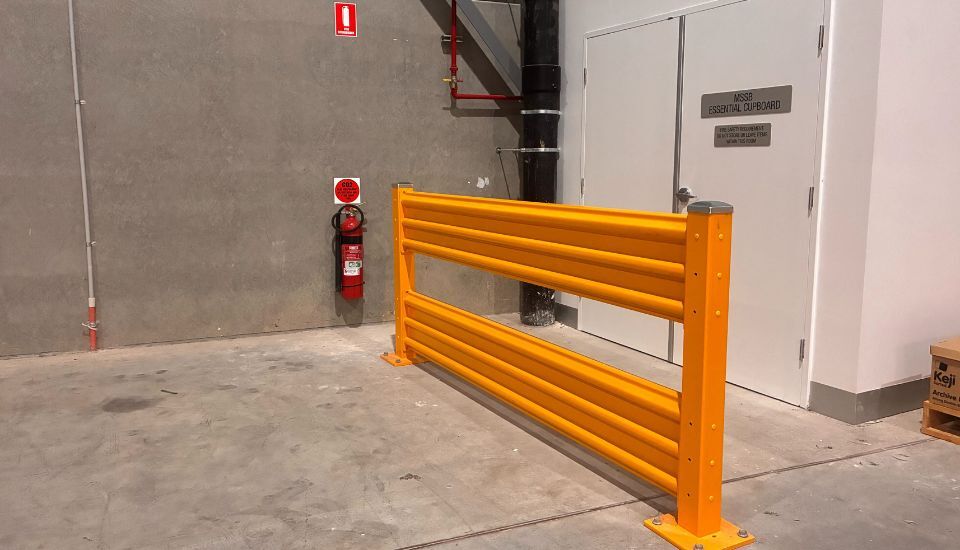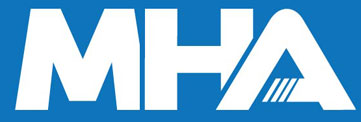When Should Guardrails Be Used?
Date Posted:1 September 2025
Safety starts with barriers. Discover how guardrails protect workers, reduce risks, and safeguard compliance across warehouses, factories, and worksites—creating safer, more productive environments.
Verdex Insights: At a Glance
-
The Challenge: Many workplaces underestimate the importance of guardrails in preventing falls and collisions. Without compliant barriers in high-risk zones such as mezzanines, loading docks, and vehicle areas, businesses face significant WHS risks and potential regulatory penalties.
-
The Insight: Guardrails provide critical fall prevention, traffic control, and access restriction in industrial settings. Meeting Australian Standard AS 1657-2018 ensures that guardrails are designed, installed, and maintained to protect workers and reduce accidents across elevated and high-traffic areas.
-
The Verdex Solution: Verdex supplies WHS-compliant guardrails, safety gates, bollards, and barrier systems for warehousing, logistics, construction, and manufacturing environments. Our durable, high-visibility systems help businesses meet legal safety obligations while improving site efficiency and worker confidence.
What Are Guardrails and Why Are They Important?
Guardrails are fixed safety barriers designed to prevent falls, collisions, or unauthorised access in high-risk work areas. Commonly made from steel, aluminium, or durable polymers, guardrails are installed in environments such as warehouses, factories, loading docks, and construction sites to create physical boundaries between people and hazards.
They are essential for worker protection in areas involving elevated platforms, mezzanines, vehicle traffic, or moving machinery. By preventing accidental falls or unauthorised entry into restricted zones, safety guard rail fencing play a critical role in workplace health and safety (WHS) compliance.
While often confused with handrails, guardrails serve a different function. Handrails assist with stability on stairs or ramps, whereas guardrails are intended as fall-prevention and impact-protection barriers. However, the two systems are frequently used together for comprehensive safety.
Installing guardrails is a proactive way to minimise workplace injuries, manage traffic, and meet WHS responsibilities under Australian law.
When Should Guardrails Be Used?
Elevated Work Platforms and Mezzanines
Guardrails are essential on elevated work areas, including mezzanines, raised walkways, and maintenance platforms. WHS regulations in Australia mandate fall protection for any working height over 2 metres, and guardrails are a proven, passive safety solution.
In warehouses, factories, or workshops, workers may need to access elevated zones for storage, inspections, or maintenance tasks. Guardrails serve as a permanent safety barrier and security bollard, eliminating the risk of accidental falls without relying solely on personal protective equipment (PPE) and safety gear.
They also assist in compliance with AS 1657-2018, the Australian standard for fixed platforms, walkways, stairways, and guardrails, ensuring safe movement across high areas.
Pedestrian Walkways Near Traffic Zones
In facilities where pedestrians and vehicles share access—such as logistics centres, warehouses, or large manufacturing sites—guardrails are vital to keeping foot traffic safe.
They form a physical boundary between walking paths and areas used by forklifts, pallet jacks, or delivery trucks. This helps reduce the risk of collisions and near-misses.
In high-traffic environments, guardrails are often used in conjunction with other safety systems like bollards, gates, or line markings to create clear, navigable routes for both people and vehicles. By directing traffic flow and reducing ambiguity, they help streamline operations while prioritising safety.
Around Machinery or Hazard Zones
Guardrails are also used to restrict access to hazardous machinery or operational zones. These barriers help prevent unauthorised or accidental contact with moving parts, hot surfaces, or dangerous processes.
In manufacturing or processing plants, guardrails are often combined with warning signage, interlocked access gates, and lockout/tagout procedures for comprehensive hazard control.
Guardrails can also help establish safe maintenance areas by clearly delineating operational machinery from service zones. This promotes safer workflows and reduces the likelihood of injury during daily operations or servicing tasks.
Loading Docks and Ramps
Loading docks, service ramps, and raised platforms pose significant fall risks for both workers and equipment. Installing guardrails at these points creates a safe boundary that prevents falls and keeps handling equipment from rolling off the edge.
These areas often experience high traffic and fast-paced operations, particularly in distribution centres or retail warehouses. Guardrails can absorb minor impacts from pallet jacks or trolleys while also guiding personnel safely during loading and unloading.
In addition, they improve visibility of edges and drop-offs—especially important during night shifts or in low-light environments—helping prevent injuries and product damage.
Construction Sites and Temporary Work Areas
On construction sites, guardrails are often part of temporary or modular safety systems used to manage dynamic work conditions. Mobile guardrail systems can be installed quickly around edges, excavations, scaffolding, or elevated walkways to provide fall protection and zone demarcation.
They are especially useful in temporary access areas or when work conditions are constantly changing. Lightweight, modular systems allow for fast relocation and easy reconfiguration, keeping the site compliant with safety protocols.
At Verdex, we believe guardrails play a key role in managing short-term hazards and maintaining a safe environment for contractors, visitors, and site workers alike.
Australian WHS Standards and Guardrail Requirements
Guardrail installation and usage in Australian workplaces is governed primarily by AS 1657-2018, which outlines the minimum safety requirements for walkways, stairways, and guardrails. This standard provides guidance on materials, design, height, spacing, and load ratings to ensure the system provides reliable fall prevention.
Guardrails are required when workers are exposed to a risk of falling from a height greater than 2 metres. They are also recommended around hazardous areas or traffic zones, even when fall hazards are not present, to provide impact protection or access control.
Key installation requirements include:
-
A minimum guardrail height of 1 metre above the walking surface
-
Midrails or infill to prevent objects or limbs from passing through
-
Load-bearing capacity to withstand horizontal and vertical forces as specified in the standard
Employers are responsible for ensuring guardrails are installed and maintained in line with these standards to meet WHS obligations and reduce workplace injury risks. Alongside guardrails, accessible first aid kits are another essential requirement for workplaces to handle incidents effectively
Choosing the Right Guardrail System for Your Site
Selecting the best guardrail system depends on your site’s unique environment and operational needs.
Fixed guardrails are ideal for permanent fall protection, while modular or portable systems offer flexibility for temporary worksites.
Material options include steel for heavy-duty applications, aluminium for corrosion resistance and lightweight use, and plastic for low-impact indoor zones.
It’s important to consider compatibility with other safety products, such as safety gates, bollards, and fencing systems, to ensure seamless integration.
Verdex offers a comprehensive range of guardrail solutions as well as a variety of workplace safety equipment and supplies tailored for both indoor and outdoor use, backed by expert advice and installation support to help you stay WHS-compliant and operationally efficient.
Reach out to the team for more information by emailing sales@verdex.com.au or filling out or online contact form.
Frequently Asked Questions
Are guardrails required by law in all workplaces?
Not all workplaces legally require guardrails, but they are mandatory in areas where there is a risk of falling from heights above 2 metres, as per Safe Work Australia guidelines and AS 1657-2018 standards.
What’s the difference between guardrails and handrails?
Guardrails are used to prevent falls and restrict access, typically found on elevated or hazardous zones. Handrails, on the other hand, are used for stability and support on stairs, ramps, or slopes.
Can guardrails be used outdoors?
Yes. Guardrails made from galvanised steel or aluminium are ideal for outdoor applications, including construction sites, loading bays, and vehicle zones, due to their weather resistance and durability.
Do guardrails require regular inspection?
Absolutely. Guardrails should be inspected regularly for signs of wear, corrosion, or damage. Periodic checks ensure they remain structurally sound and continue to meet WHS safety standards.






















































































 Trolleys & Hand Trucks
Trolleys & Hand Trucks Cage Trolleys
Cage Trolleys Cleaning Carts & Trolleys
Cleaning Carts & Trolleys Construction Trolleys
Construction Trolleys Custom Trolleys
Custom Trolleys Hand Trucks & Dollies
Hand Trucks & Dollies Laundry/Linen Trolleys
Laundry/Linen Trolleys Lifting Trolleys
Lifting Trolleys Order Picking Trolleys
Order Picking Trolleys Panel Cart Trolleys
Panel Cart Trolleys Platform Trolleys
Platform Trolleys Powered Trolleys
Powered Trolleys Shelf & Tiered Trolleys
Shelf & Tiered Trolleys Shopping Trolleys
Shopping Trolleys Stainless Steel Trolleys
Stainless Steel Trolleys Tool Trolleys
Tool Trolleys Utility & Service Carts
Utility & Service Carts Lifting & Handling Equipment
Lifting & Handling Equipment Forklift Attachments
Forklift Attachments Jib Attachments
Jib Attachments Lifting Hoists & Pallet Hooks
Lifting Hoists & Pallet Hooks Load Skates & Tow Tugs
Load Skates & Tow Tugs Manual Stackers & Lifters
Manual Stackers & Lifters Pallet Jacks
Pallet Jacks Pallet Lifters
Pallet Lifters Pallet Rotators & Dispenser
Pallet Rotators & Dispenser Powered Pallet Trucks & Electric Lifters
Powered Pallet Trucks & Electric Lifters Scissor Lift Trolleys and Tables
Scissor Lift Trolleys and Tables Conveyor Equipment
Conveyor Equipment Conveyor Frames & Stands
Conveyor Frames & Stands Roller & Skate Conveyors
Roller & Skate Conveyors Ladders & Access Equipment
Ladders & Access Equipment Container & Yard Ramps
Container & Yard Ramps Ladders & Step Stools
Ladders & Step Stools Work Platforms & Crane Cages
Work Platforms & Crane Cages Drum Handling Equipment
Drum Handling Equipment Drum Storage & Bunding
Drum Storage & Bunding Drum Trolleys & Lifters
Drum Trolleys & Lifters Forklift Drum Handling
Forklift Drum Handling Waste Handling & Bins
Waste Handling & Bins Bin Lifters & Tippers
Bin Lifters & Tippers Plastic Waste & Wheelie Bins
Plastic Waste & Wheelie Bins Steel Waste & Tipping Bins
Steel Waste & Tipping Bins Waste Carts
Waste Carts Dangerous Goods Storage & Spillage
Dangerous Goods Storage & Spillage Aerosol Cans Storage Cages
Aerosol Cans Storage Cages Bunded Pallets & Storage
Bunded Pallets & Storage Corrosive Goods Storage Cabinets
Corrosive Goods Storage Cabinets DG Storage & Trolleys
DG Storage & Trolleys Flammable Liquid Cabinets
Flammable Liquid Cabinets Forklift Gas Storage Cages
Forklift Gas Storage Cages Site Storage
Site Storage Spill Kits
Spill Kits Shelving & Storage Equipment
Shelving & Storage Equipment Stillage & Transport Cages
Stillage & Transport Cages 750 Series Cage Configurations
750 Series Cage Configurations Heavy Duty Cabinets
Heavy Duty Cabinets Heavy Duty Shelving
Heavy Duty Shelving Mega Bins & Pallets
Mega Bins & Pallets Packing & Workbenches
Packing & Workbenches Parts Trays & Stor-Pak Bins
Parts Trays & Stor-Pak Bins Pegboard & Louvre Panels
Pegboard & Louvre Panels Plastic Bins & Crates
Plastic Bins & Crates Plastic Handling Solutions Bins
Plastic Handling Solutions Bins Plastic Pallets
Plastic Pallets Stack & Nest Bins
Stack & Nest Bins Pallet Racking Accessories
Pallet Racking Accessories Workplace Equipment
Workplace Equipment Modular Workbenches
Modular Workbenches Electric Height-Adjustable Workbenches
Electric Height-Adjustable Workbenches Floor Matting
Floor Matting General Workplace Equipment
General Workplace Equipment Industrial Weighing Scales
Industrial Weighing Scales Packaging Machinery
Packaging Machinery Stationery Cupboards
Stationery Cupboards Storage and Stillage Cages
Storage and Stillage Cages Tool Trolleys
Tool Trolleys Tooling Cabinets
Tooling Cabinets Workshop Fans and Coolers
Workshop Fans and Coolers Safety Barriers, PPE & Signage
Safety Barriers, PPE & Signage Barriers & Bollards
Barriers & Bollards First Aid Equipment
First Aid Equipment Gloves, Knives and PPE
Gloves, Knives and PPE Signage
Signage Cleaning & Site Supplies
Cleaning & Site Supplies Cleaning Equipment
Cleaning Equipment Cleaning Trolleys
Cleaning Trolleys Rubbish Bins
Rubbish Bins Signs & Traffic Supplies
Signs & Traffic Supplies Construction Equipment
Construction Equipment Construction Trolleys
Construction Trolleys Waste Handling
Waste Handling General Site Equipment
General Site Equipment Concrete Equipment
Concrete Equipment Site Storage
Site Storage Lifting Equipment
Lifting Equipment











